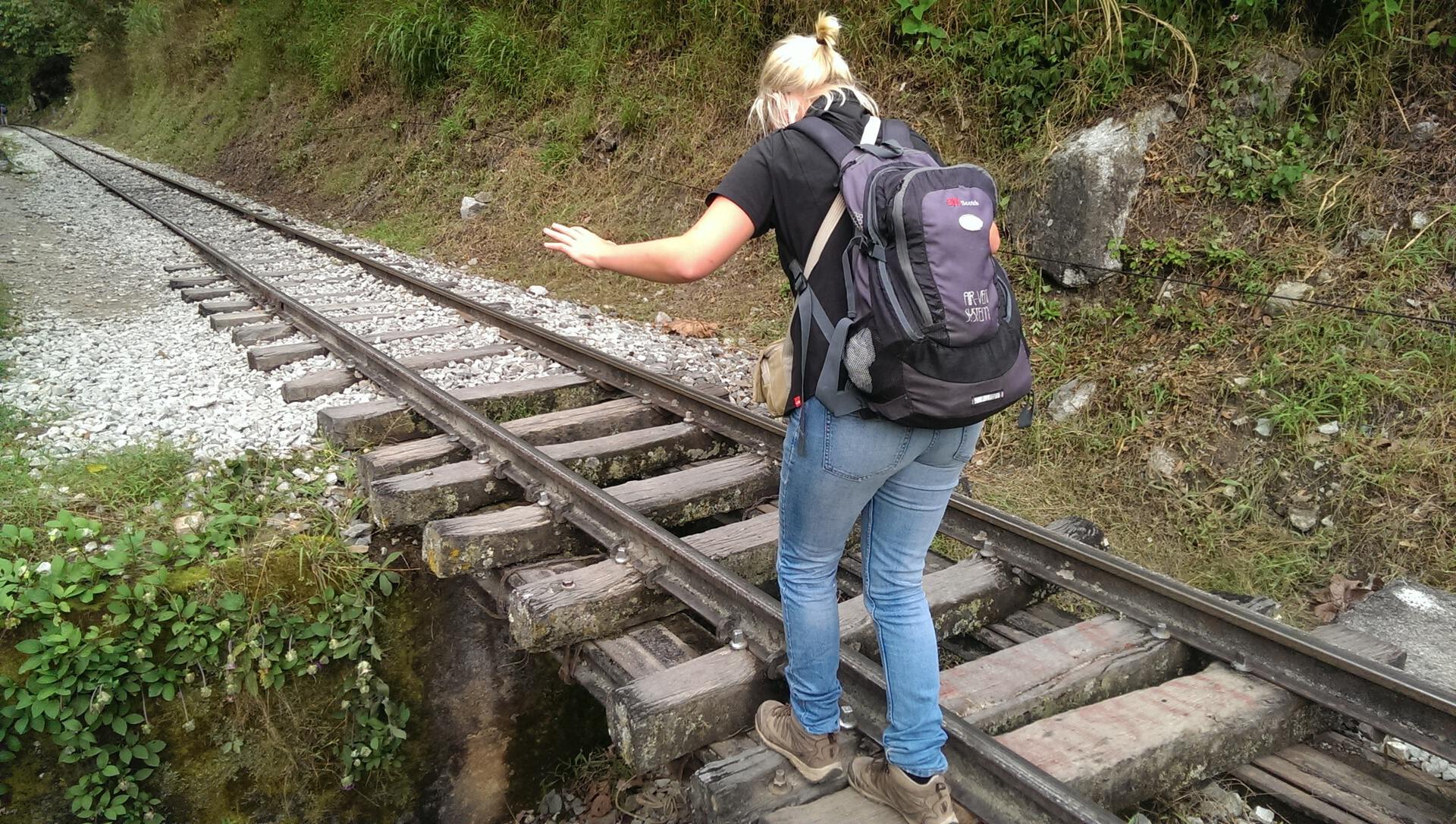How to not get run over by trains

The Sacred Valley in Peru is home to all kinds of mysterious Inca fragments. One example is the collection of agricultural terraces of Moray. They believe they have been used to experiment with crops on different temperatures and water levels:

Since the Inca's didn't bother to document their entire lifes with hashtags and selfies, we don't know that much about them. All we've really got are some diary entries of the Spanish conquistadores about how Francisco Pizarro and his tiny army admired the Indies:
The Indians' camp looked like a very beautiful city. They had so many tents that we were all filled with great apprehension
but basically destroyed everybody and everything:
If night had not come on, few out of the more than 40.000 Indian troops would have been left alive
The Inkariy Museum near Calca has excellent depictions of what the Inca population might have looked like. We would really recommend a visit:

One of the few places the Spanish hadn't discovered is Machu Picchu. Well known by any self-respected tourist, this place is an obvious must-see. Initially we planned to just skip it, to avoid the crowds and look for a more off the beaten track ruin. But eventually we gave in, for only one reason: "It's Machu Picchu man!".
The guide books advise to take the train from Cusco or Ollantaytambo to Aguas Calientes, and take the shuttle bus from there. The other option is to hike for a few days with a guide and mules. Since it was high season and we hadn't reserved anything, that was no option. There is no road going directly to Aguas Calientes, so the only option left was to take the train. We were facing a real problem: the train and bus rides together would set us back more than $200, and we couldn't get there with our own car.
After doing some research we discovered an alternative backdoor to Machu Picchu, via Santa Teresa. It doesn't require taking any trains, but is a harder to plan and execute. All in all it took us one day from Calca in the Sacred Valley to reach Aguas Calientes.

Calca to Aguas Calientes:
- Driving next to the railway at Ollantaytambo, making snarky remarks about tourists paying too much
- Passing Abra de Malaga at 4350m after 61 hairpin turns
- Making our way through a thick layer of clouds
- Overtaking mountainbikers in a beautiful lush green valley towards Santa Maria
- Driving next to steep cliffs, through creeks and mud and over squeeking bridges to Santa Teresa


And that was only the start. We parked the car at camp site "Cola del Mono", and took a short taxi ride to Central Hidroelectrica. There is nothing to do here really, and there is no place to park your car. From here it's only a short hike (2h) to Aguas Calientes. Most of the hike was relatively easy and flat, since we were following a railroad track. We were passing old rusty bridges, train yards, abandoned huts and old power lines eaten by moss.

Near the end of it we had to go through two pitch black tunnels of about 100m each. Once we passed the first, we heard loud honks echoing through the valley, and in no-time a train was wooshing our hair sideways.

We stepped aside on time, and were relieved it didn't pass us in the tunnel. We arrived in Aguas Calientes exhausted, and watched some Copa America soccer with a delicious wood fire clay oven pizza and an ice cold beer. That's the benefit of a tourist town right there.
The next day we planned to reduce the costs further, by not taking the shuttle bus. A zigzagging staircase took us in 90 minutes to the entrance of Machu Picchu. It was long. It was hard. It was 90 minutes of pure exhaustion. If the Incas had to do this on a regular basis they'd outrun Usain Bolt without a sweat. But we made it and saved $28. Buuya!

Machu Picchu can't be explained using words, or even pictures. With some creative thinking there is a way to see it on a budget. It is overrun by tourists but don't let them bother you. We sat down at places we liked for long times and absorbed the entire site. With some imagination it's possible to see the Inca's working on the agricultural terraces, watching the stars in observatories and worshipping the sun in temples. Machu Picchu is a magical place. Don't miss it.
